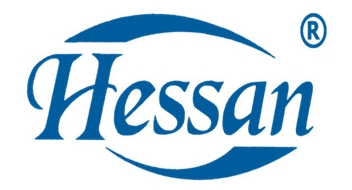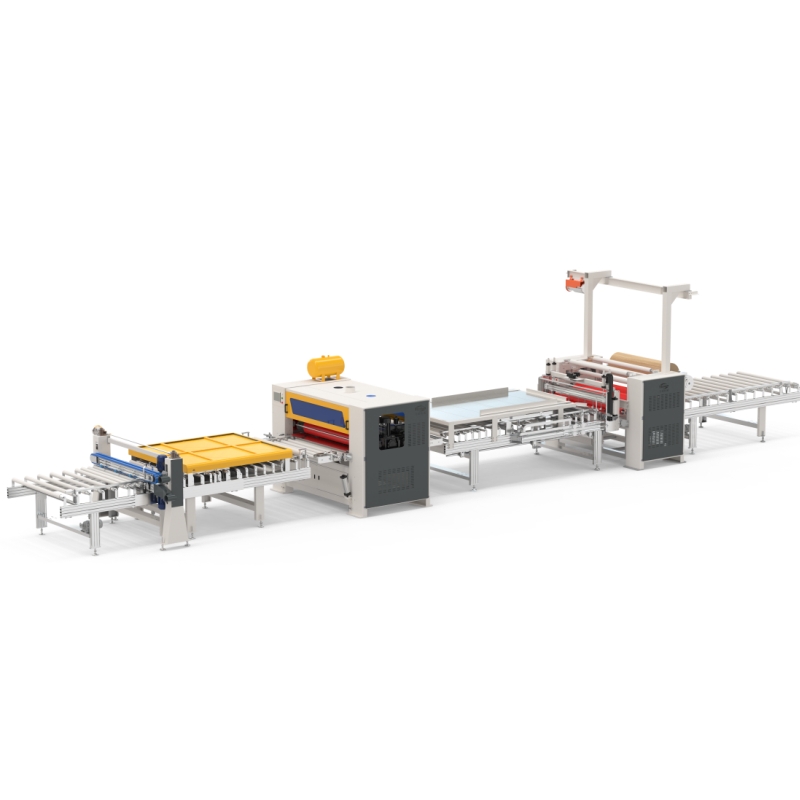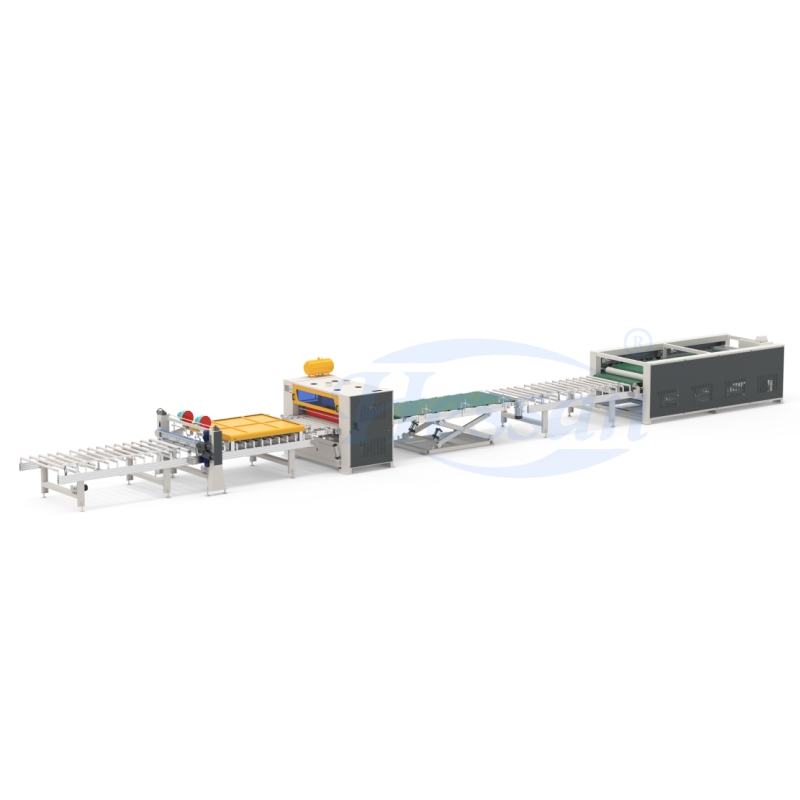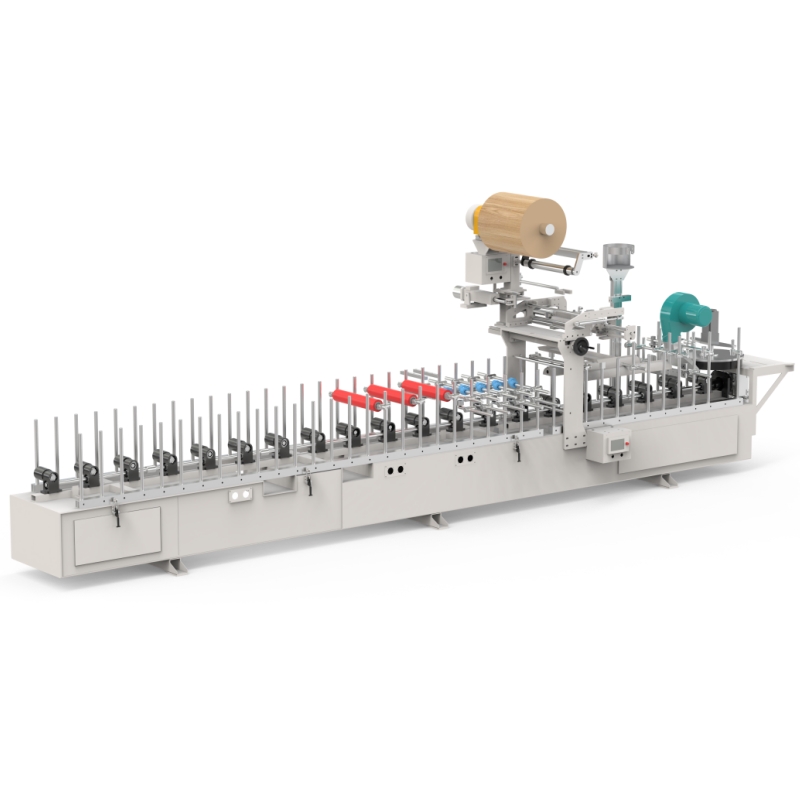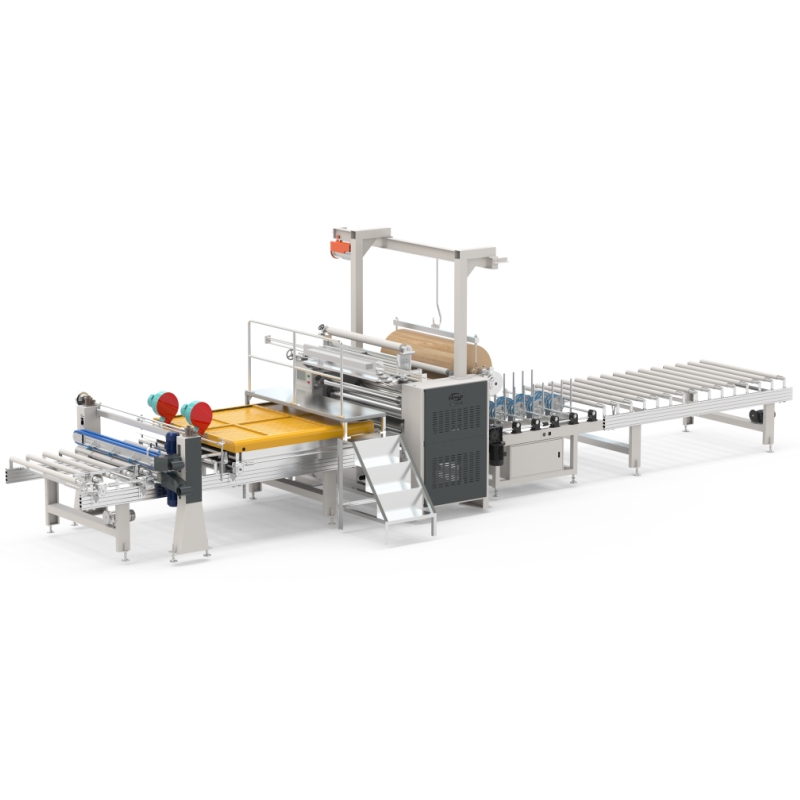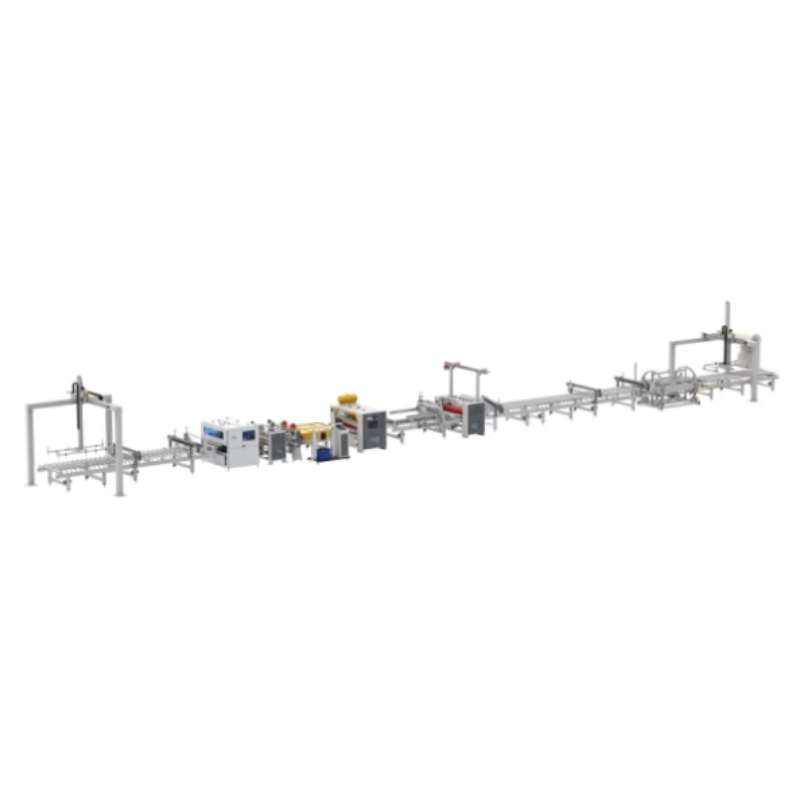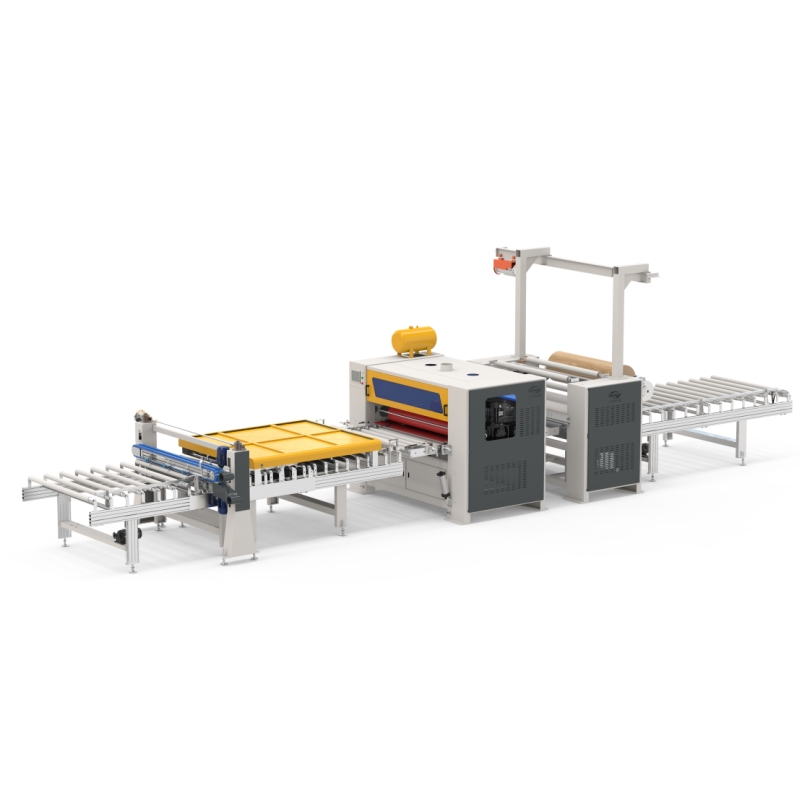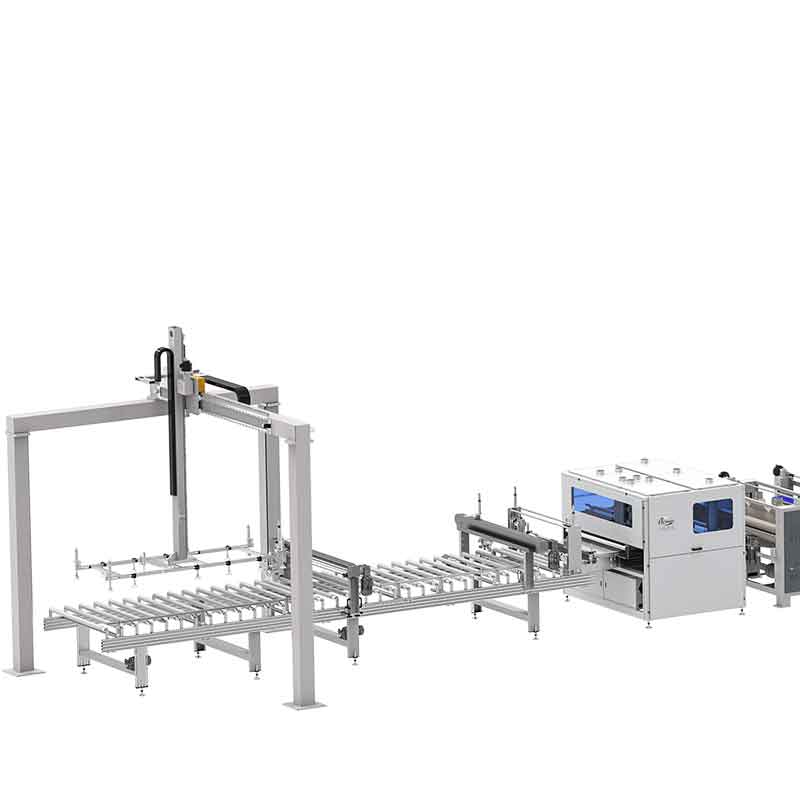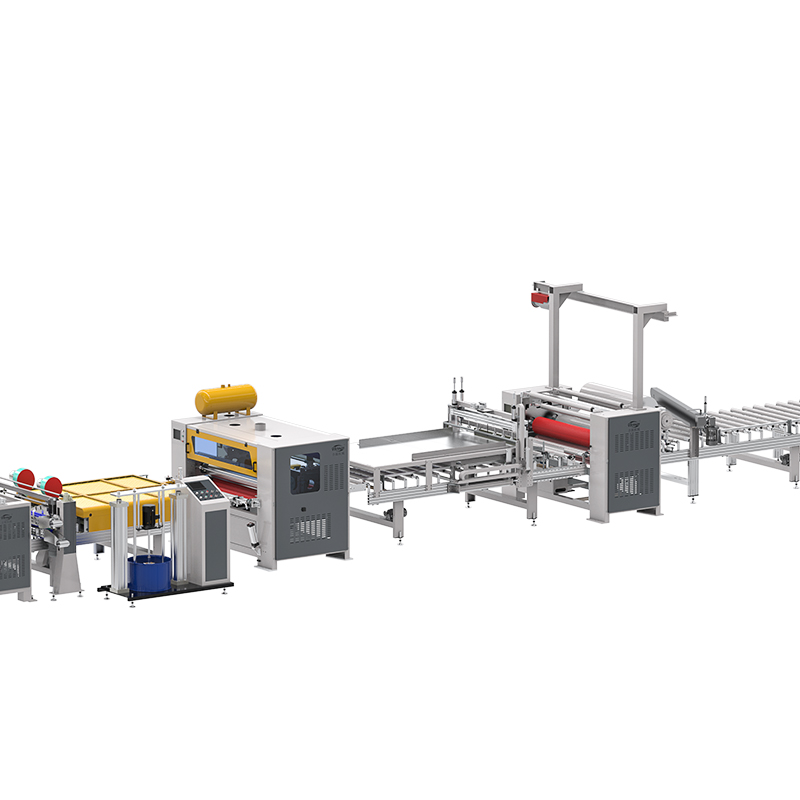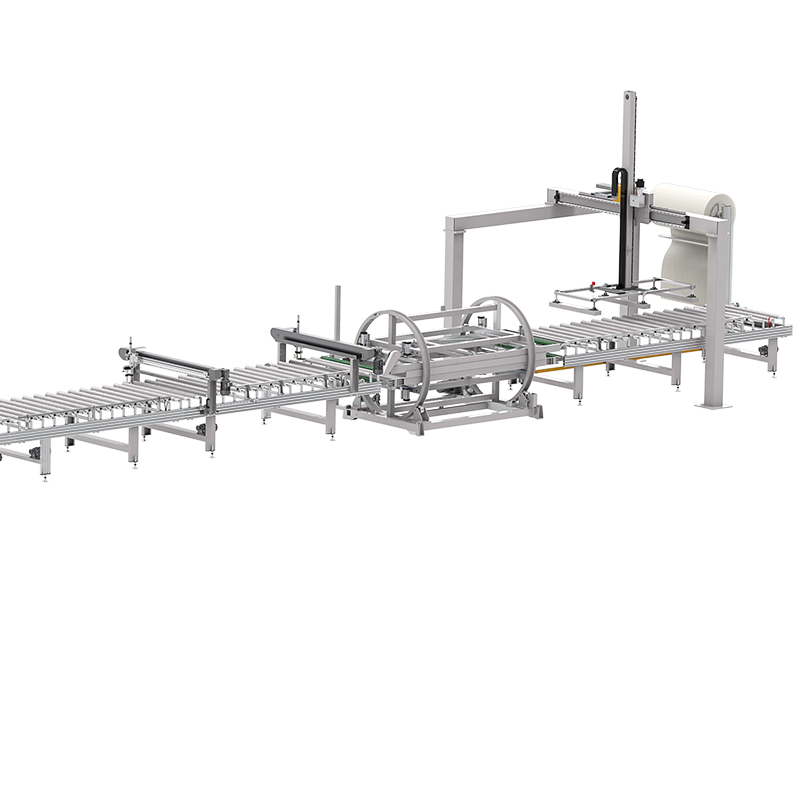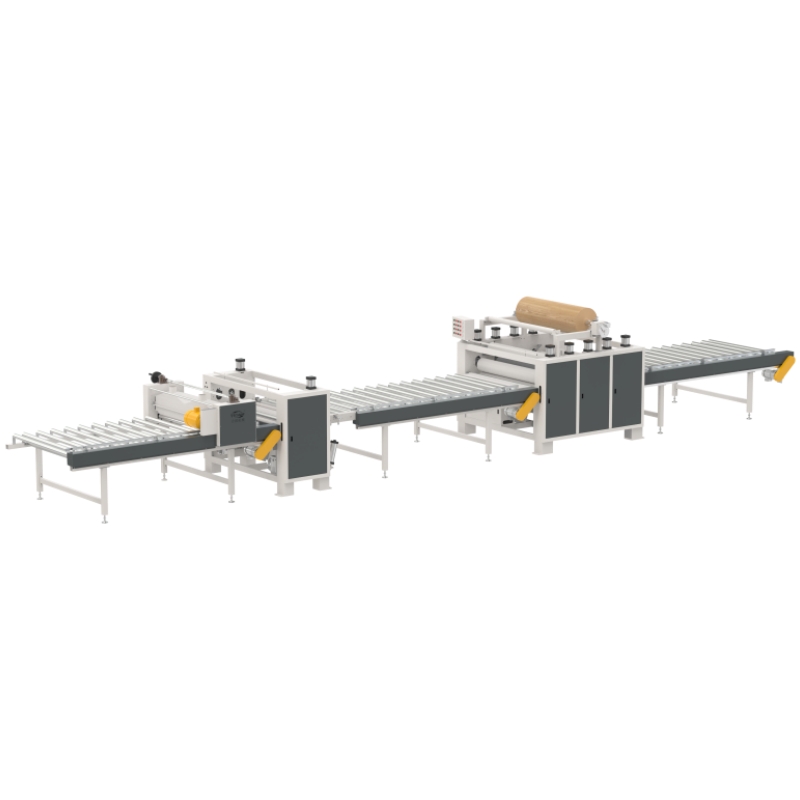I. Core Application Fields (Most Commonly Used)
The field of architectural decoration
Honeycomb aluminum panels/metal panels: This is the most classic and largest application field of
PUR honeycomb production lines. It is used for making high-end building curtain walls, interior ceilings,
partitions, elevator cabins, etc. The ultra-high peel strength provided by PUR adhesive ensures the safety
and durability of the board under long-term wind pressure and temperature difference changes.
Stone honeycomb panel: It combines ultra-thin natural stone (such as marble, granite) or artificial stone
with an aluminum honeycomb core. It greatly reduces the weight, enhances safety, and retains the natural
beauty of the stone. The bonding strength of PUR adhesive is sufficient to bear the weight of stone.
Ceramic honeycomb panels: Similar to stone honeycomb panels, they use ultra-thin ceramic panels as the
surface layer and are applied to the interior and exterior walls of buildings.
High-pressure fireproof board (HPL) honeycomb board: It is used in places that require high fire resistance
ratings and clean environments, such as hospitals, laboratories, subway stations, kitchen furniture, etc.
The furniture and home furnishing field
High-end furniture panels: used for making office desks, conference tables, cabinet doors, wardrobe doors,
etc. The boards produced by the PUR production line are extremely flat, not prone to deformation, and have
good edge sealing performance, making them less likely to come apart.
Interior door core board: As the filling material for interior doors, it features light weight, sound insulation,
sturdiness and anti-deformation.
Home partition: Used for making lightweight and high-strength interior partition walls.
The field of transportation
Rail transit interior panels: used for side panels, top panels, luggage racks, partitions, etc. of high-speed rail,
metro and bullet train carriages. PUR honeycomb panels are the top choice for extremely high requirements
in terms of lightweight (energy conservation), fire resistance (FST standard), strength and environmental
VOC.
Interior panels for ships: Interior wall panels and ceilings for cruise ships and ferries, which are required to
be moisture-proof, fire-resistant and lightweight.
Truck and RV body panels: Used for making refrigerated truck body panels and RV body panels, they require
heat insulation, light weight and high strength.
Aircraft interior parts: Some interior parts of minor structures will also adopt this process.
Other industrial fields
Electronic equipment structural components: such as the load-bearing trays of server cabinets and test
equipment platforms, etc., are required to be anti-static, non-deformable and have good load-bearing
capacity.
Cleanroom panels: High-standard wall and ceiling panels for cleanrooms used in industries such as
semiconductors and biomedicine.
Advertising display equipment: high-end signboards, ultra-flat display boards for exhibitions and displays.
II. Why are these boards produced using PUR production lines? (Advantages of PUR Technology)
Compared with traditional glue (such as epoxy resin) or thermoplastic film (such as EVA) production lines,
PUR honeycomb production lines have irreplaceable advantages:
Extremely high bonding strength: especially "peel strength", which is the core indicator for measuring the
quality of honeycomb panels. After curing, PUR adhesive forms an irreversible cross-linked structure, with
a strength far exceeding that of thermoplastic films such as EVA.
Excellent weather resistance: Resistant to high and low temperatures (stable performance from
-40℃ to +80℃), damp heat, aging and solvents. This makes it highly suitable for use on the exterior walls
of buildings and in vehicles with variable environments.
Environmentally friendly and solvent-free: PUR adhesive is a 100% solid content hot melt adhesive. There is
no VOC (volatile organic compounds) emission during the production process, which complies with the strictest environmental protection regulations (such as the EU's REACH regulation), and is friendly to workers' health and the factory environment.
High production efficiency: The production line integrates gluing, lamination, hot pressing and curing, with
a high degree of automation and a fast production cycle.
The flatness of the sheet is excellent: The continuous flat pressing process under high temperature and high
pressure can produce sheets of extremely large size and very flat, with almost no wavy deformation.
Feature / Metric | PUR Honeycomb Production Line Panels | Traditional Process (e.g., Epoxy Resin) Panels |
Bonding Strength | Extremely High, especially peel strength | High, but peel strength is generally lower than PUR |
Weather Resistance | Excellent, resistant to high/low temperatures, heat, and humidity | Average, prone to aging in high-temperature or humid environments |
Environmental Friendliness | Excellent, solvent-free, zero VOC | Poor, contains solvents, has VOC emissions |
Production Efficiency | High, continuous and automated production | Relatively Low, requires longer curing time |
Panel Flatness | Excellent, continuous flat-pressing, dimensionally stable | Average, susceptible to pressure and curing stress |
Cost | High production line investment, but advantageous overall cost | Material cost may be lower, but overall cost is higher |
When you need to produce high-performance, high-value-added honeycomb composite panels for harsh
environments, the PUR honeycomb production line is the most advanced and reliable choice today.
It is almost the "standard" production process for high-end architectural curtain wall panels, rail transit
interior panels and high-end furniture panels.
